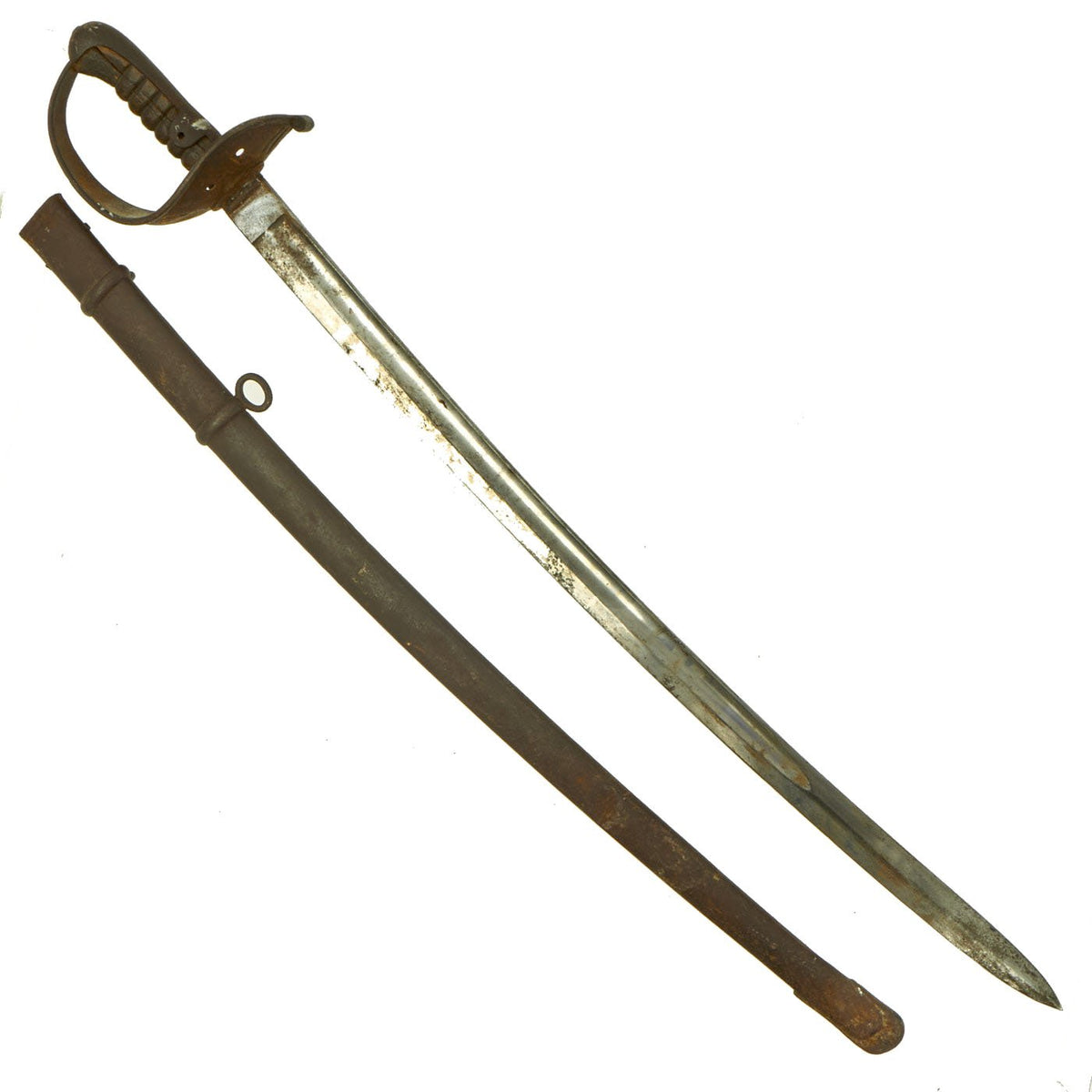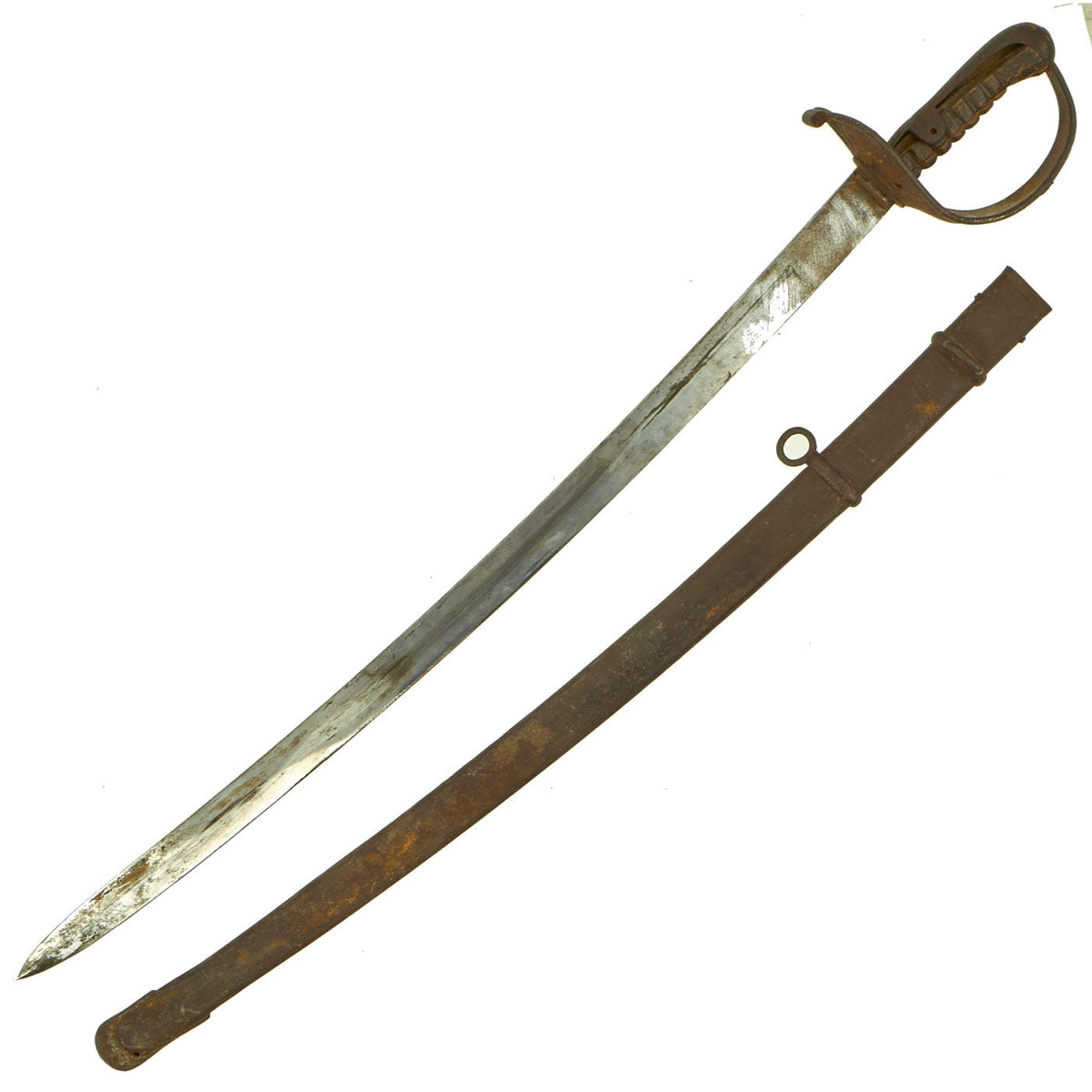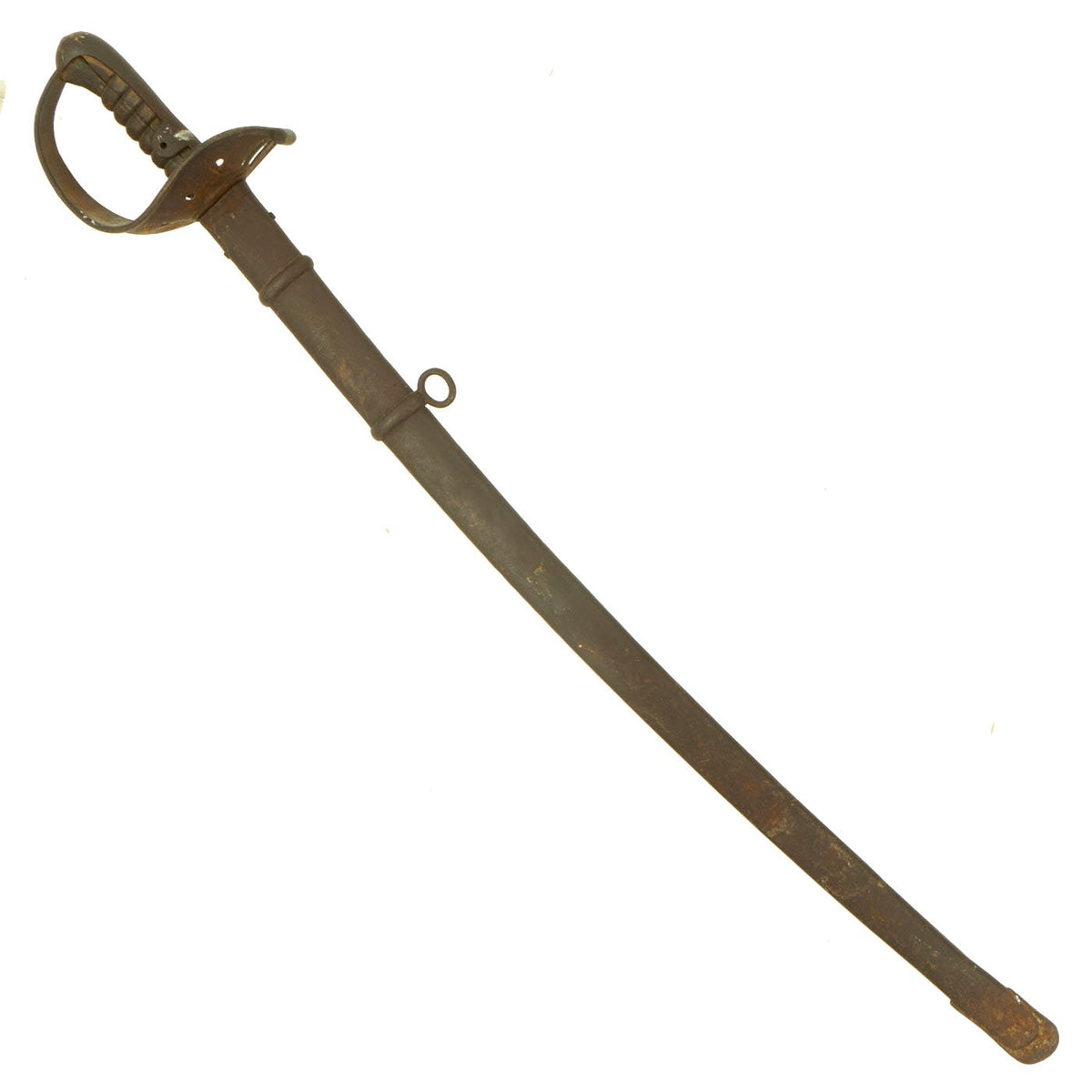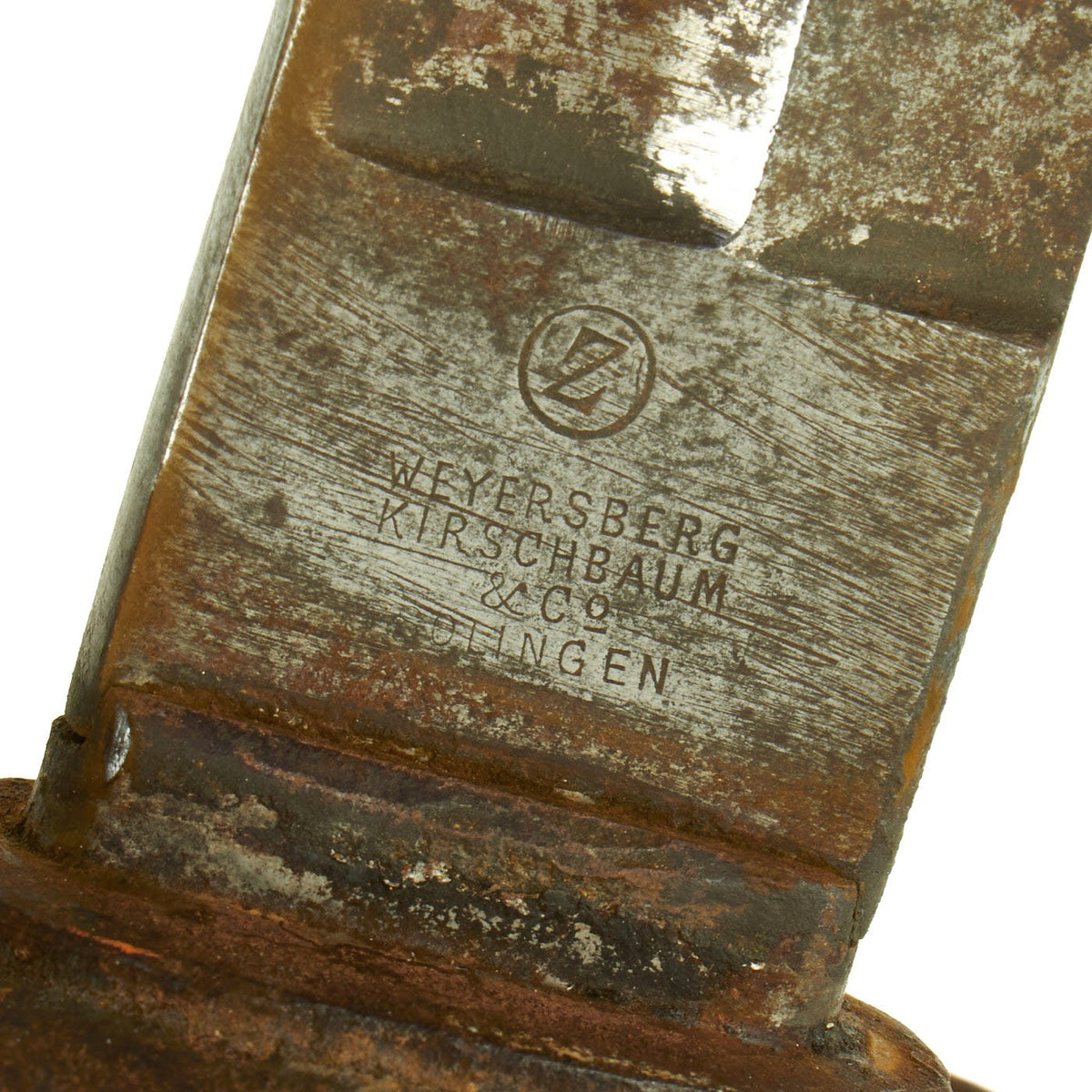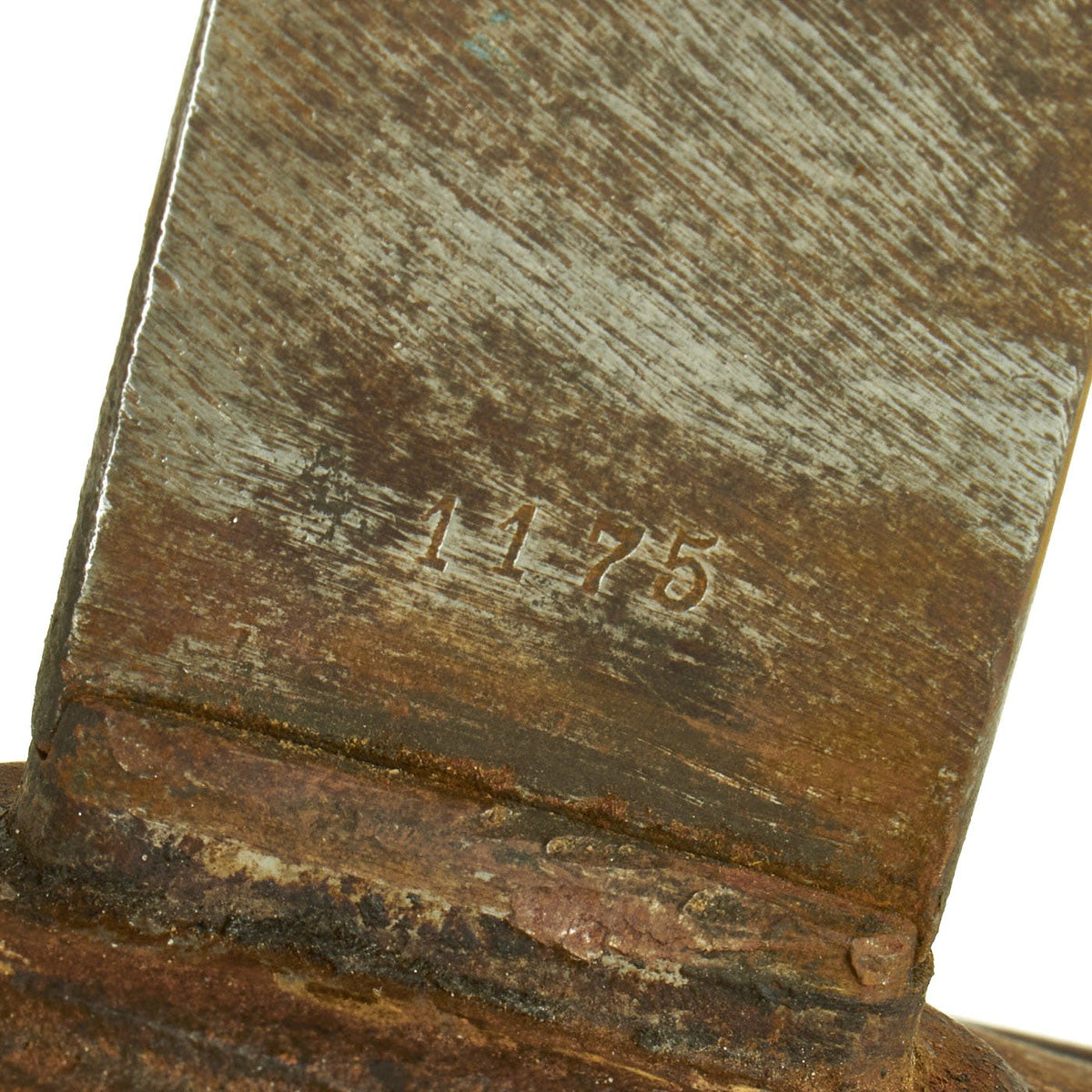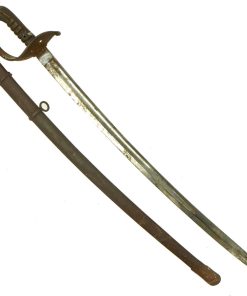Original Austrian M1858 Heavy Cavalry Saber with Replaced Blade by Weyersberg Kirschbaum & Scabbard Original Items
$ 295,00 $ 118,00
Original item: Only One Available. Just purchased at a recent military show, this definitely looks like it just came of the attic, or possibly even a barn! However, even with the lovely aged patina, it is still an example of the rare Austrian Model 1858 Heavy Cavalry Saber. This model is one of many incremental improvements made to the design based on input from Cuirassiers and Uhlans. It replaced the earlier model 1850, and then was itself replaced in 1861, so they were only made for 3 years.
The design is relatively standard, with a heavy curved blade and substantial guard, which has the correct 7 holes. The blade ricasso is marked with a Z in a circle, and under this is the German maker’s name:
WEYERSBERG
KIRSCHBAUM & CO
SOLINGEN
This company is a famous manufacturer of military swords and cutlery in Solingen, Germany – a city famous since the middle ages for its metal-working and craftsmanship in sword making. Per J. Anthony Carter’s fine work GERMAN SWORD AND KNIFE MAKERS, the traditional manufacturing of swords at WKC dates back to the year 1774 when the Weyersberg first registered the ”Kings head” as their trademark. Later in 1883 the company merged with the Kirschbaums and the company WKC was formed as it exists today. It was heavily involved with exporting edged weapons to South American countries in the late 19th and early 20th century. The other side of the sword is marked with a faded Austrian Imperial Eagle to the left of 1175.
The blade is very nice, however it also is ground flat on one side, with a fuller on the other. More importantly, the company Weyersberg Kirschbaum did not come into existence until 1883, so there is no way this can be a correct M1858 Cavalry saber, as they were not made after 1861. Still, the hilt is definitive, and definitely correct for that model of saber. Our conclusion then is that at some point in the late 19th century, the blade was broken for some reason, and then replaced. It’s also possible that a father passed the sword on to his son, who replaced the blade. The possibilities are almost endless, and definitely thought provoking.
Condition of the sword and scabbard shows that it was not stored properly in an attic or cellar for some time. The exposed metal areas, original bright steel, now have a dark patina, with areas of surface rust as well as dirt. The wooden handle has cracked through, and some pieces are missing. It is currently loose as well, but could possibly be repaired. The blade, protected by the scabbard, still retains much of the original bright finish, with small areas of staining. The scabbard, aside from the patination, is in very good shape, with no major dents or bends.
A very interesting example of 19th Century Austrian Heavy Cavalry Saber, with some great research potential. Ready to restore or display as is!
Specifications:
Blade length: 31 1/2”
Blade Style: Single Edged Saber w/ Fuller
Overall length: 42 1/2”
Handguard: 5”L x 6″W
Scabbard length: 37 3/4”
Fast Shipping with Professional Packaging
Thanks to our longstanding association with UPS FedEx DHL, and other major international carriers, we are able to provide a range of shipping options. Our warehouse staff is expertly trained and will wrap your products according to our exact and precise specifications. Prior to shipping, your goods will be thoroughly examined and securely secured. We ship to thousands clients each day across multiple countries. This shows how we're dedicated to be the largest retailer on the internet. Warehouses and distribution centres can be located throughout Europe as well as the USA.
Note: Orders with more than one item will be assigned a processing date depending on the item.
Before shipping before shipping, we'll conduct a thorough inspection of the items you have ordered. Today, the majority of orders will be delivered within 48 hours. The delivery time will be between 3-7 days.
Returns
The stock is dynamic and we cannot completely manage it because multiple stakeholders are involved, including our factory and warehouse. So the actual stock may alter at any time. It's possible that you may not receive your order once the order has been made.
Our policy is valid for a period of 30 days. If you don't receive the product within 30 days, we are not able to issue a refund or an exchange.
You can only return an item if it is unused and in the same state as the day you received it. You must have the item in its original packaging.
Related products
Uncategorized
Uncategorized
Uncategorized
Uncategorized
Uncategorized
Uncategorized
Uncategorized
Uncategorized
Uncategorized
Uncategorized
Uncategorized
Uncategorized
Uncategorized
Uncategorized
Uncategorized
Uncategorized
